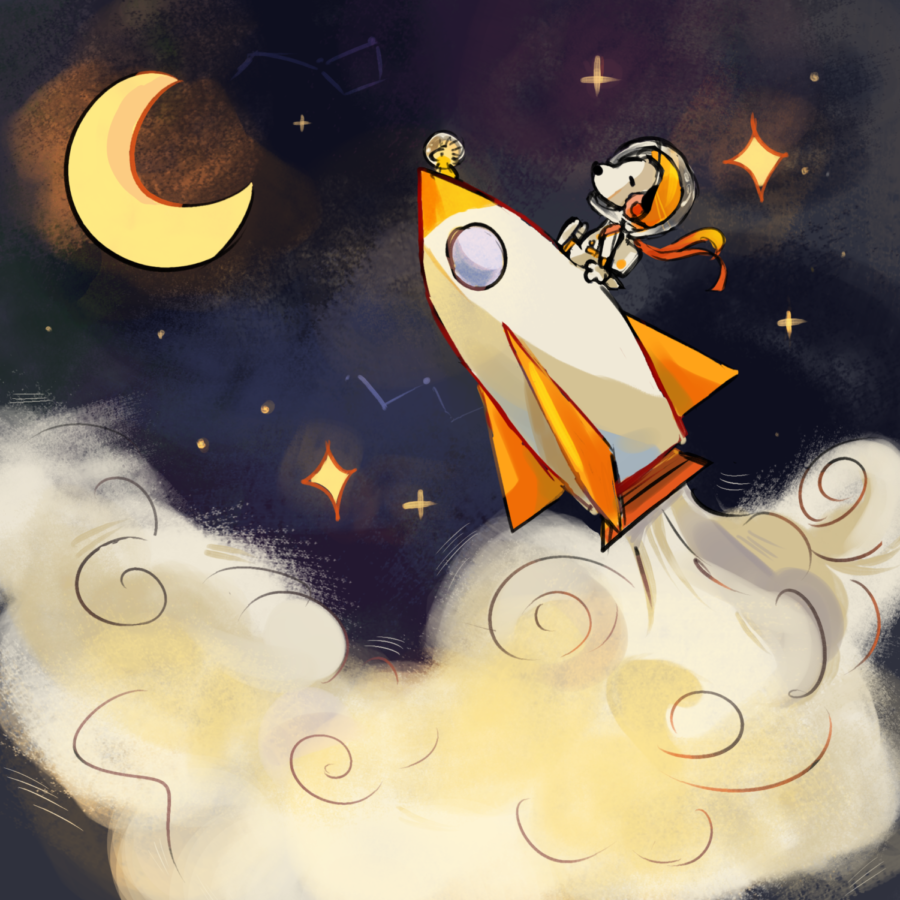After many delays, Artemis I prepares for launch
Since June 5, 2024, Astronauts Barry “Butch” Wilmore and Sunita “Suni” Williams have been floating around space in the ISS, with unlikely plans to return home soon.
November 11, 2022
The Artemis Ⅰ moon-orbiting mission, a new NASA project, is set to launch Nov. 16. It consists of the Orion Spacecraft, which is an advanced spacecraft created specifically for humans, and the Space Launch System (SLS) rocket, the most powerful rocket in existence, according to NASA. Except for a passenger Snoopy, the mission will be unmanned.
The purpose of Artemis Ⅰ is to train scientists to become accustomed to the systems that they will be using for deep space missions. As stated by NASA, the mission is primarily to test the Orion and SLS, then gather data about them as they orbit the moon for six days. Scientists will be conducting tests, correcting trajectory and evaluating the systems during the four to six week mission.
The Artemis Ⅰ expedition marks a new era in space exploration and will pave the way for future manned lunar surface operations and visits to other celestial bodies such as Mars. It is a precursor to Artemis 2, which will be crewed by the first person of color and first woman to land on the Moon. Traveling 280,000 miles away, this mission will also break the record for the farthest distance a manmade spacecraft has ever traveled.
The mission has been delayed several times, which sparked public concerns. It was first delayed when engineers were unable to cool off one of the four core RS-25 engines which was later found to be due to a faulty sensor. The second delay was due to a hydrogen fuel leak, and the third delay was due to the incoming Hurricane Ian.
“We scrubbed four times,” NASA administrator Bill Nelson said, according to The Washington Post. “We were delayed over the better part of a month. … This is part of our space program: Be ready for the scrubs.”
More recently it was delayed due to Hurricane Nicole, in which it endured 100-mile gusts and minor damages. “Camera inspections show very minor damage such as loose caulk and tears in weather coverings,” NASA associate administrator Jim Free said, according to Space. “The team will conduct additional onsite walkdown inspections of the vehicle soon.”
The RM community has contrasting reviews on the mission in regards to potential benefits or drawbacks.
“I like that we’re learning about what’s outside our world and that there’s a chance maybe there’s something better outside,” sophomore Helena Barros-Checucci said.
“We have to spend a lot of resources and time on this mission [and the moon is] basically something that is untouched by humans and it should remain that way,” freshman Ananya Govind said.
RM astronomy teacher Kevin Martz had mixed views regarding the effect of Artemis Ⅰ.
“I’m not predicting a whole lot of impact on society as a whole,” Mr. Martz said, “but I think that could be motivating for [my] students to not have to go ‘well this happened in 2005, or this happened in 1995’ and I’m sure kids think that’s ancient history.”
In regards to whether the mission would be successful, thoughts varied.
“I do not think that this mission will be successful because it seems like they’ve bitten off more than they can chew,” Govind said.
“I hope it will. I think it will be successful,” Barros-Checucci said.
“I think they’re being careful and safe,” Mr. Martz said. “…[A]s much as I want to see it, [I want them to] be careful and make this work. You have to balance your ambition with your responsibility.”
The Orion spacecraft launched from NASA’s Kennedy Space Center on Nov. 16, officially marking the beginning of the Artemis I mission.



